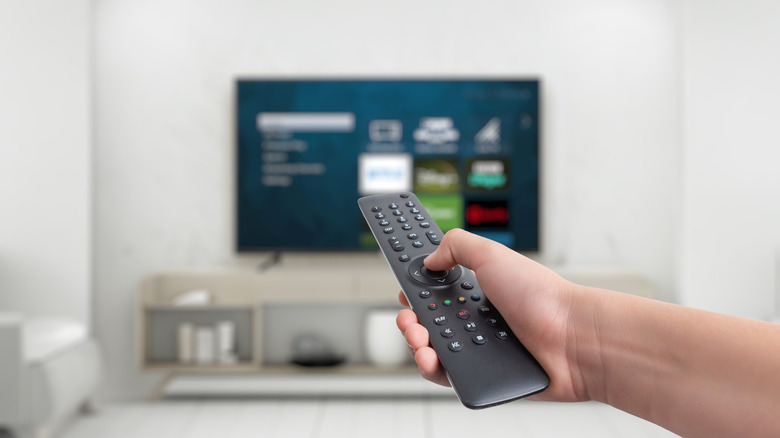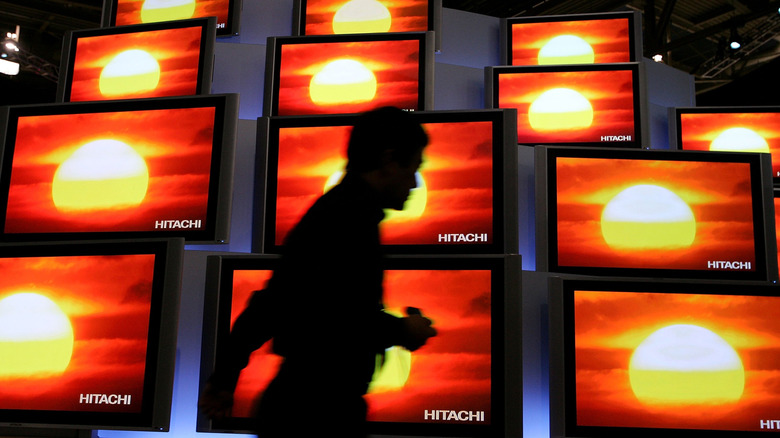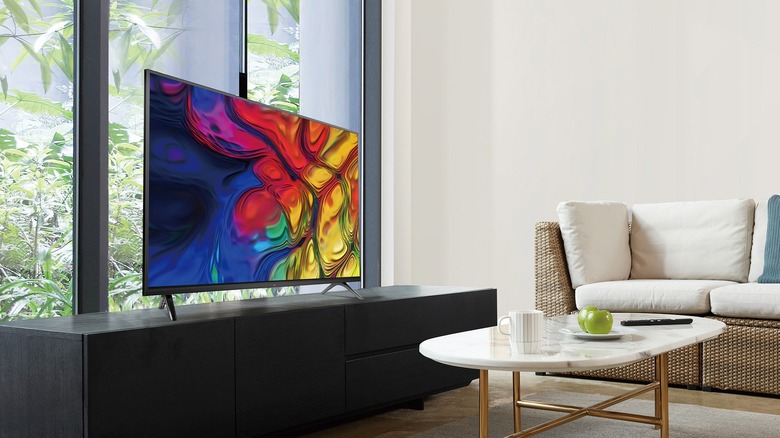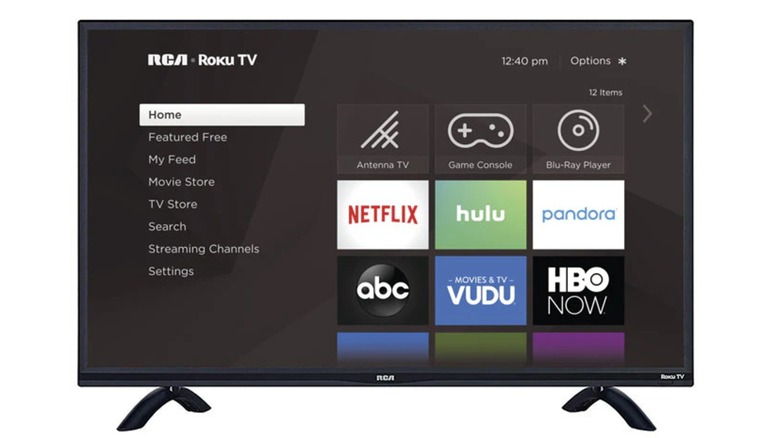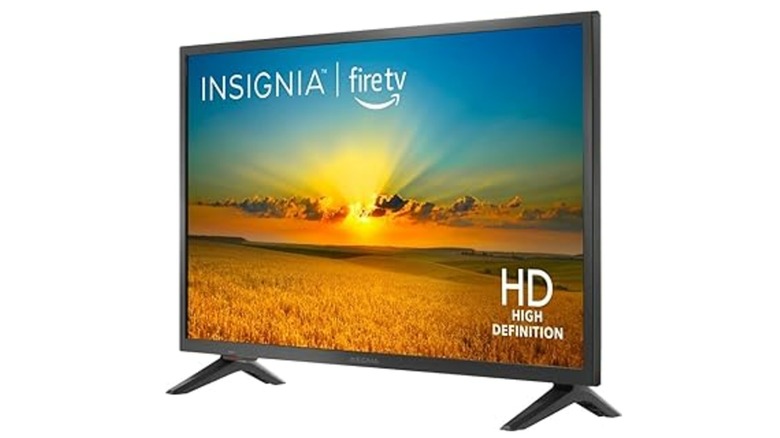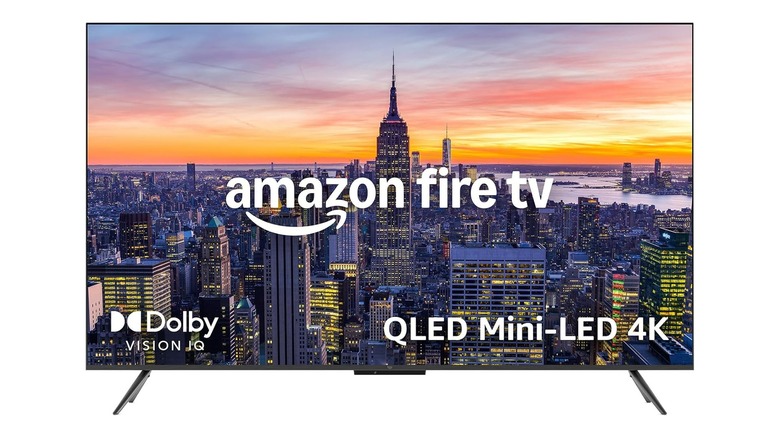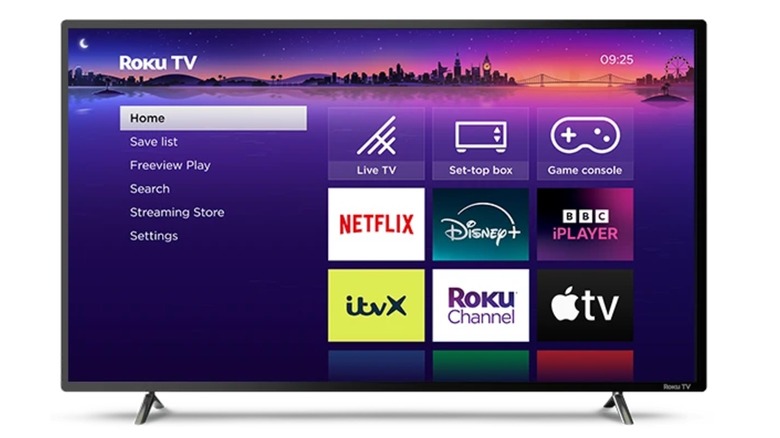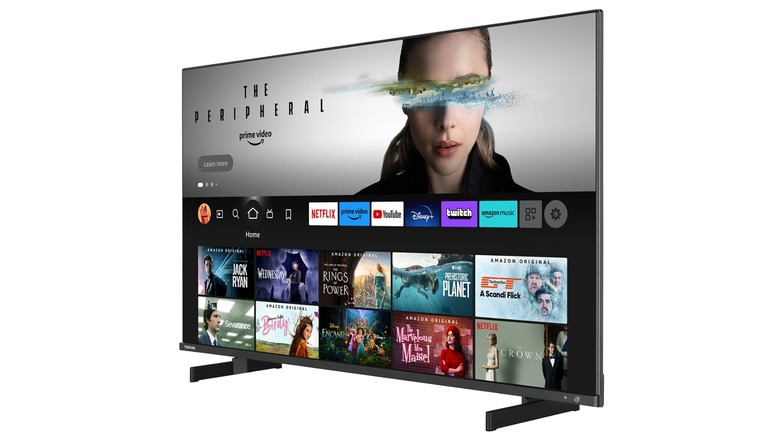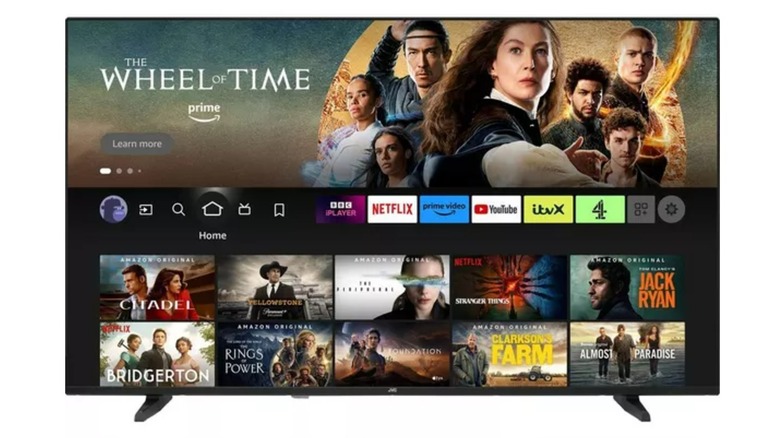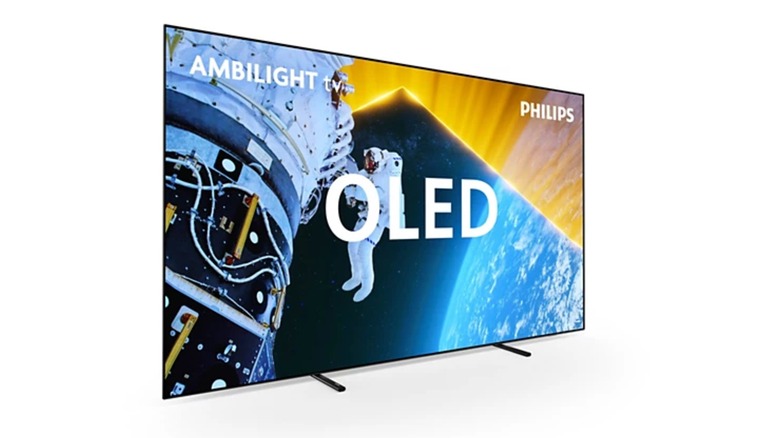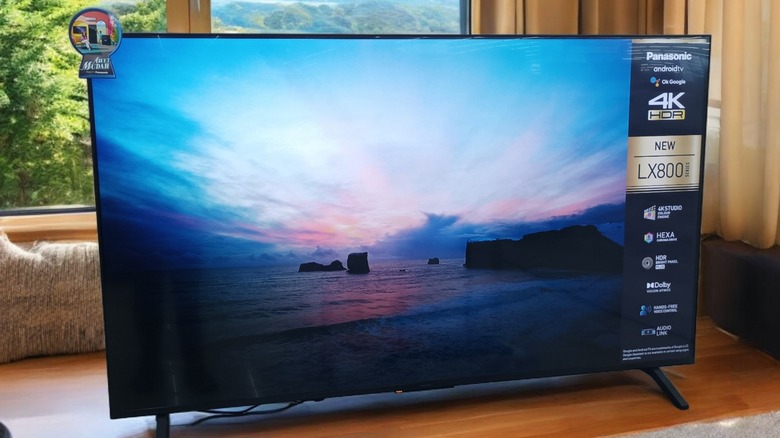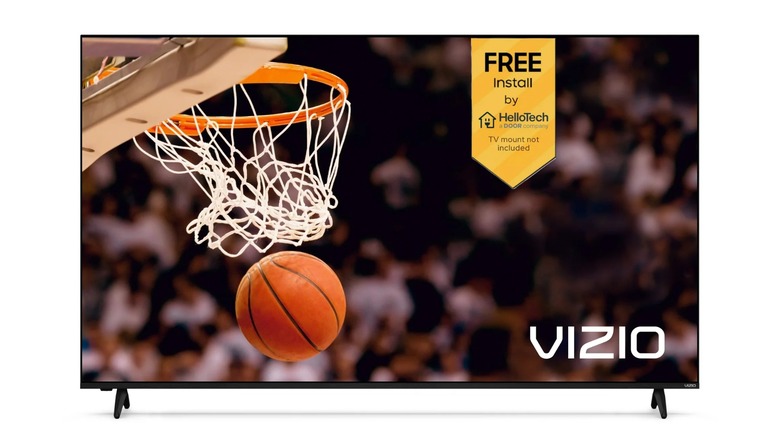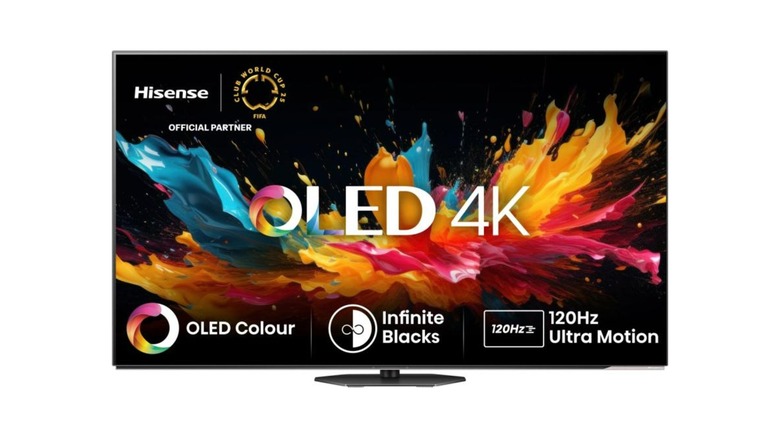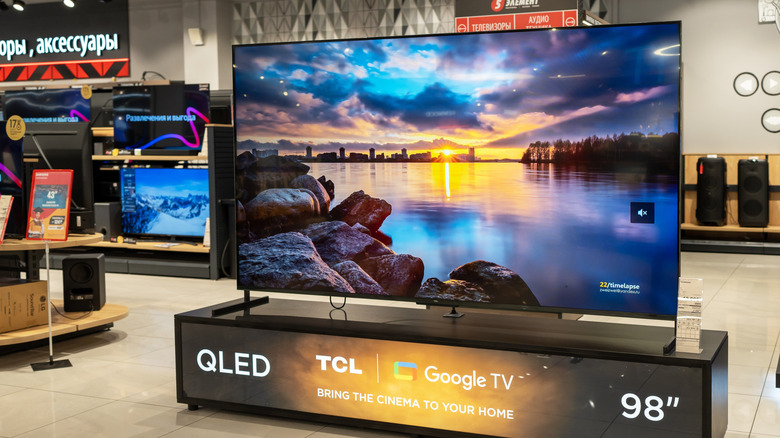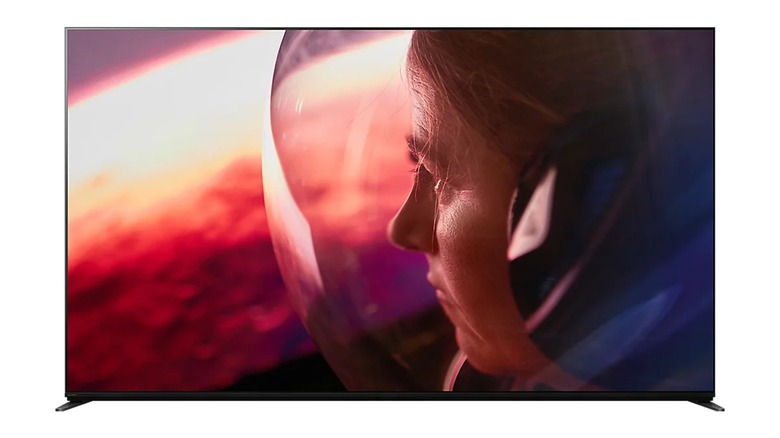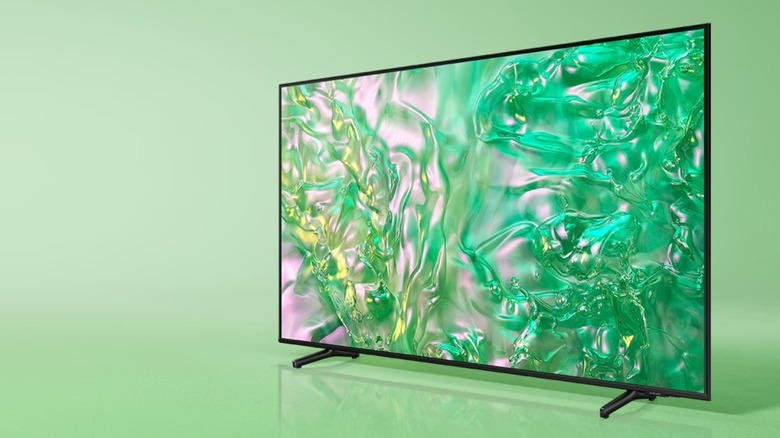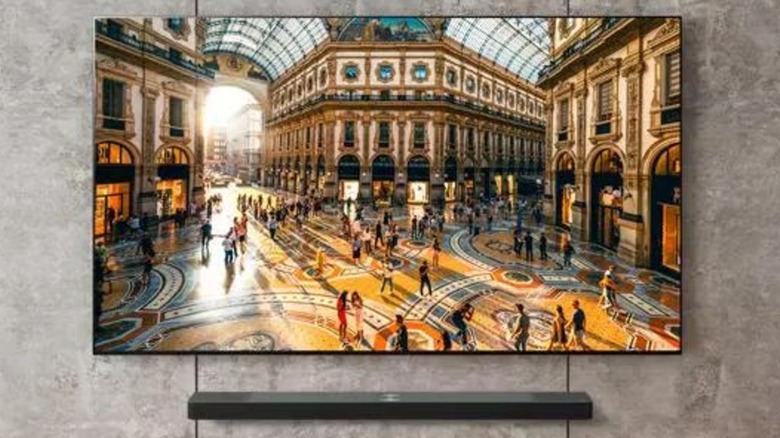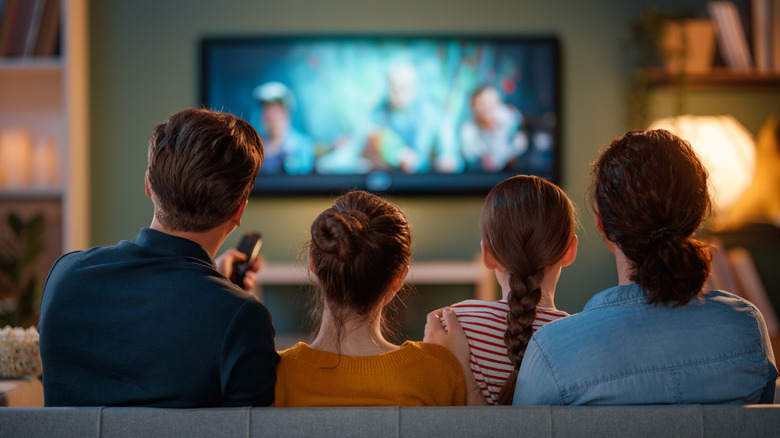16 Major TV Brands Ranked Worst To Best By Customer Satisfaction
We may receive a commission on purchases made from links.
Every new television buying endeavor comes with plenty of questions, as new technology rapidly changes the experience you can get out of a unit from year to year, and improvements in manufacturing lower the cost of televisions on the higher end of the spectrum.. You'll need to consider your sizing requirements, as well as some basic details about the resolution and other aspects.
Just about every major television manufacturer builds a variety of devices that range in size from compact to very large, and they often include a range of products in terms of color production, image clarity, and more. Some brands deliver on image quality or integrated features (in the realm of smart TV settings, for instance) better than others.
With so many choices out there and every TV in the showroom seemingly delivering a truly vivid color — a setting that many home theater installations mistakenly leave on – it can be tough to separate the wheat from the chaff. This is every major TV brand out there in the market ranked by reliability and owner satisfaction.
Hitachi
Hitachi kicks off our list, but not exactly in a good way. Hitachi TVs are no longer in standard production, with the last hitting the wider market in 2018. The Hitachi brand is still finding its way into the world of television, however, with a licensing deal that allows Vestel to make Hitachi branded devices. They're sold primarily in Argos stores in the U.K. and elsewhere in Europe, so most American buyers won't have access to the range.
Even so, that's probably a good thing as some users have noted the low production quality of Vestel-manufactured equipment. LifeStory Research gives Hitachi a two star rating and shoves it down into last place in its rankings of eight total TV makers. A lack of availability and poor production quality in models that are out in the market combine to make Hitachi an obvious brand to shy away from.
FFalcon
FFalcon is a sort of off-brand name from within the TCL universe that makes some of the cheapest smart TVs currently available. The company was founded in 2017 as a cost-effective alternative to TCL's main television options. As is the case with Hitachi televisions, FFalcon may be difficult or even impossible to find in the United States as the TVs are primarily available in the Australian market.
The TVs made under this badge are cheap. This is their primary use case, and buyers looking for a television that will deliver a quality visual experience will typically want to look elsewhere unless working on a shoestring budget. In the same way that Hitachi TVs don't hit the mark for a cross section of reasons, FFalcon televisions are a brand that you should avoid as well.
RCA
RCA is a major name in the world of cost-effective 4K TV units, but this is really where the brand's star power begins and ends. The brand was once a true powerhouse in media, and the red, white, and yellow cables once used to connect TVs to accessory playback devices even bear the same name. RCA units don't generally reach up into the higher dimension market, and so you'll naturally exclude them from your search if you're on the hunt for a large screen supported by advanced screen technology for your living room.
However, even in appropriate settings for smaller TVs, RCA may not live up to your expectations. Users who are familiar with the brand's catalog frequently warn others of the limited picture quality, and a 60Hz refresh rate cap means that RCA units aren't optimal for playing high frame rate video games.
At the end of the day, RCA TVs can frequently be found for pretty cheap, but you're getting what you're paying for with them rather than buying into a brand that has the potential to rise above its price tag.
Insignia
Insignia is another TV brand that delivers on the promise of cheap and cheerful, but perhaps just a tad better than RCA. Insignia TVs are frequently priced to move. They're often the lowest priced option you'll find in both brick and mortar stores and online. An Insignia 32-Inch F20 Series TV at Amazon is currently on sale for just $79, for example. For buyers seeking a rock bottom price point without the need for major screen enhancements or other integrated features — most models do not include HDMI 2.1 ports, for instance — an Insignia is a great choice.
However, if you're in the market for a TV that will serve as a gaming center or as a primary viewing solution you'd be better off looking elsewhere. The lack of upgraded feature support means that the picture won't be right for high intensity screen action. Lower quality frame rates — Insignias can't reach the 120 FPS necessary to support smooth gaming – among other letdowns make this a good budget solution, but not much more.
Amazon
Amazon TVs offer generally positive user experiences, with outlets like Rtings giving the Fire TV Omni Series units a 7.0. Rtings notes that it's somewhat comparable — although lagging behind — Hisense U7N, U7, and U75N devices. A 55-inch Fire TV Omni Series Mini-LED can be found at Amazon for $899, making it a decent option that sits relatively central in the pricing hierarchy.
We reviewed the Fire TV Omni QLED Series in 2023 and came up with a generally favorable, middle of the pack placement. The Fire TV experience remains somewhat busy, whether you're navigating the system on an Amazon TV or a dongle-style device. Similarly, the TV features aggressive upselling in a manner that's similar to the brand's Alexa devices.
While the TVs deliver a high quality viewing experience alongside wide-angle accessibility, these additional stumbling blocks are enough to bump it down the ladder.
Roku
Roku delivers excellent entertainment hardware, but its television sets haven't caught up with the display prowess of its competitors, yet. The utility of external dongle-type streaming has become powerful enough that there's no need to select your television based on its software parameters as a primary decision making point. In fact, some users of Roku's full scale TVs often advise against following in their footsteps. Instead, they suggest seeking out television display that meets your viewing requirements and then pairing it with an external Roku streaming device.
That being said, if you are set on a Roku TV, opting for one like the Roku Pro Series QLED — which currently costs $598 at Amazon for a 55-inch — is a solid option. Rtings calls it the best Roku TV and scores it tremendously well for use with video game systems. The outlet also delivers a 7.8 rating for HDR movies and a 7.7 for mixed usage requirements. The TV isn't adept at dealing with bright external light sources, however, so it's best kept for a darker environment.
Toshiba
Toshiba has been delivering TVs to the market for decades. It's a well-recognized brand that fits firmly within the mid-range and budget-friendly segments of the television marketplace. What Hi-Fi likens the modern Toshiba range to other brands like Amazon, Insignia, and TCL. LifeStory Research rates it fifth among eight TV brands they evaluated in 2024. All told, this places it roughly center of the pack when it comes to brand prominence and a quality product.
The standard models from Toshiba feature LCD screens with smart functionality. They come in 4K and HD variants and generally support Dolby audio. For those scouring the mid-range TV market, Toshiba may be an attractive option when found on sale. Discounts on the TVs here will yield lower-market pricing for mid-range features that bring great cost effectiveness into the picture.
JVC
JVC offers fantastic brand power in the entertainment marketplace. Those who remember VCR tapes will be intimately familiar with the big bold lettering of the Japanese brand. However, in the modern market JVC has taken a notable step back.
There's nothing inherently wrong with the brand's televisions, but they're just a bit lackluster when compared to other selections out there in the ether. That being said, JVC delivers better resolution than some others in the mid-market arena like Philips, with a pixel density measured ahead of some Hisense, TCL, and even Samsung screens.
Perhaps the most important drawback of the JVC brand is its availability. This has been a problem for buyers seeking JVC units in the past, but it appears that new licensing deals with MTC has brough JVC units back to shelves in greater numbers. For now, outlets like Tech Radar note that units like JVC's LT-32CR230 is best kept in a guest bedroom for infrequent viewing usage.
Philips
Philips TV units are yet another option sitting right in the heart of the pack. Philips makes a range of electronics gear, as well as medical equipment and other consumer appliances. The brand has its hands in a wide array of cookie jars, and the TVs it makes are a solid option for mid-range buyers of all sorts.
It's worth noting that some users have had issues with the brand's larger TVs, so sticking to a midsized option when selecting a mid-range brand like Philips may be the smart path forward. Others have noted that Philips TVs aren't necessarily guaranteed to be manufactured by the parent company as a result of tangled licensing deals in recent years. Similarly, customer support seems to be lacking in coverage for its televisions.
Even so, Smart Home Scope notes that the brand's Smart TV platform is responsive and easy to use, and picture quality is quite good with solid wide-angle viewing integrated into the system. However, color range is somewhat limited on the Philips 43PUS7608 model that the outlet reviewed.
Panasonic
Panasonic takes us into the upper crust of manufacturers. From here on out, we'll spend less time talking about the limitations of the TVs featured, but rather their individual strengths weighed against one another. In addition, 2024 saw Panasonic reenter the U.S. market in force, marking a big move for a brand that's long been known for producing quality screens.
What Hi Fi highlights the Panasonic MZ1500B in particular. Tech Radar likewise called it an "excellent, mid-range OLED TV," although it also notes that limited sizing options are available for buyers. The price is also higher than what we've seen for many of our previous entries on this list, but the picture quality and sound out of the TV deliver a tremendous viewing experience.
Vizio
Vizio is perhaps the king of cheap TVs. LifeStory Research rates it sixth out of eight manufacturers, and Wired notes that Vizio's 4K TV is the best cheap viewing option the market has to offer. In addition, the brand was third in terms of 2023 market share among U.S. viewers.
Before it was purchased by Walmart in early 2024, Vizio used a manufacturing model similar to Apple in that Vizio didn't manufacture its own equipment even though it wasn't owned by a conglomerate parent company like many other TV brands. Users frequently have good things to say about Vizio, and it has remained a dependable option for those looking for a low cost TV for light viewing or other similar usage needs.
Hisense
Hisense is rated near the top of the pack by the likes of International Brand Equity, and it's highlighted by others like Wired. Hisense TVs aren't as visually effective as TCL and some of its more prominent competition. However, the brand delivers good picture quality on a significant budget, and should be a major option in the running for buyers looking to bring home a new TV that isn't a true top of the line flagship while still delivering a great viewing experience.
Hisense is also noted for its brightness. These TVs therefore make for a solid option in more challenging viewing settings such as partially exposed environments that have to contend with the sunlight on a regular basis. Sound quality is also quite good on the typical Hisense, making it a well-rounded option for many mid-market buyers across the sizing spectrum.
TCL
TCL is edged out from contention on the podium here, but that doesn't mean the brand can't deliver a great TV that's worth considering. Wired highlights a few TCL options as honorable mentions, but cautions buyers on the potential inclusion of old software with bug problems running the system. The outlet also notes that TCL has served as a prominent platform for Roku smart systems and so a Roku-enabled TCL unit may be a particularly good buy for those who use the service.
Rtings offers a range of great TCL systems that buyers might consider, as well. The outlet focuses particular praise on their brightness and picture quality as well as support for variable refresh rates. The outlet suggests that TCL TVs can frequently find themselves delivering high quality viewing experiences at budget-friendly pricing.
Where TCL flounders in the wider competition is with its high end units, however. They provide ample juice for buyers looking for a great TV at a reasonable cost, but if you're in the market for a stunning visual experience, looking to one of the big three players is probably your best option.
Sony
Digital Trends named the Sony A95L QD-OLED as the best overall TV model available in 2025 — which you would want it to be for nearly $3,300 for a 65-inch option at Amazon. The outlet notes that this unit features tremendous color accuracy and brightness, image contrast, and great sound, covering essentially the entirety of your viewing experience with positives.
Indeed, there's a lot of excellent quality to talk about when discussing Sony TVs. The brand is rated fourth among manufacturers by International Brand Equity, noting its longstanding reputation for tremendous quality. However Sony's limited market share does much of the anchoring of this maker against its competition.
The limited reach of Sony units plays a major role in its positioning as third-fiddle to its two more prominent high end competitors. Similarly, the cost profile of the typical Sony TV makes it less competitive than some others in direct comparisons. However, if you're looking for a stunning image quality and don't mind spending a bit of extra cash, Wired and others come together in agreement in suggesting that some of Sony's offerings deliver the absolute best picture.
Samsung
Samsung is a consistently strong competitor in the television marketplace. Lifestory Research names Samsung the best brand in the game with a five star rating. However, Samsung is just barely edged out by one of its primary foes in the marketplace in our estimation. Really though, in the grand scheme of things any of these top three manufacturers hold a strong claim to the title of best TV maker. Someone has to be top dog, however, and preeminence within OLED technology and the sheer scope of the top brand's reach across the marketplace helps edge it above Samsung for our purposes.
In turn Samsung stands ahead of Sony for another important reason. Not only are Samsung TVs built with tremendous quality underpinning the visual experience, but Samsung was also 2023's most popular TV brand by ownership share in the United States. Beyond that, Wirecutter notes that Samsung's LCD TVs are fantastic options in the midsize arena, and Digital Trends names the OLED 4K S95D model one of the best available across all televisions. making this a brand that's capable of standing toe to toe with some of the best selections across the market's wide variance.
LG
LG is simply a powerhouse brand when it comes to television sets across virtually the entire scope of buyer needs. LG delivers some of the best OLED TVs the market has to offer. It's also a prominent manufacturer of mid-range and budget units, to boot. This makes LG a brand that should be at the top of your search list no matter what kind of screen you're hoping to bring into your home.
Speaking of OLED television technology, LG was among the crowded field that pursued this visual tool in its early days, but continued to pursue improvements in the technology in 2013 when other brands refocused. Today, roughly 60% of all OLED TVs sold globally are LGs, with the company standing as a pioneering agent in bridging the gap between its early accomplishments and the astonishingly clear picture produced in the modern device.
LG is consistently named among the top performers in the television space, by outlets like Wirecutter, Tom's Guide, and Rtings. Whether you're seeking a flagship viewing experience to round out a home theater setup or looking for a mid-tier device to place in the kitchen or a bedroom, LG stands at or near the top of the heap no matter how you slice it.
Methodology
These brands were ranked based on user feedback in forums and surveys. Outlets like LifeStory Research and Visual Capitalist offered survey information. Rankings also took ratings details into consideration. Trusted resources like The New York Times Wirecutter, Wired, and Digital Trends provided key details here.
